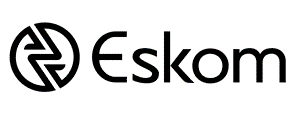

Energy Minister Jeff Radebe has hinted to possible dramatic changes in the structure of South Africa’s electricity supply industry, which is currently dominated by Eskom, a vertically integrated State-owned utility.During a recent stakeholder gathering he strongly affirmed that government would consider allowing greater levels of competition in the sector to ensure that consumers benefitted from the lowest prices possible.
The question was posed by Wits Business School Energy Leadership Centre director Dr Rod Crompton, a former full-time regulator at the National Energy Regulator of South Africa and currently a member of the Eskom board.
Crompton stressed the economic importance of ensuring the lowest possible prices for all energy sources, including electricity, and suggested that competition would be important in addressing “artificially high prices we have for so many energy carriers”.
Radebe said competition was already beginning from government’s independent power producer (IPP) programmes, through which more than 6 000 MW of mostly renewable-energy capacity had already been procured.“But we cannot just end there, we need to move into the next process of ensuring that you and I as consumers of electricity get the benefits of lower tariffs.
“I believe that is what is going to be happening. So Eskom, prepare for the good times ahead when our people will be enjoying competition from the State, via Eskom, the private sector . . . as well as from nongrid generation.”
Radebe’s message aligns with Public EnterprisesMinister Pravin Gordhan, who confirmed in May that Eskom’s business model was up for discussion as part of efforts to lower the fiscal risks associated with the debt-laden utility and reposition it for future sustainability.
The Minister reiterated his intention to have the Integrated Resource Pan (IRP) for electricity approved by Cabinet by mid-August and again promised that the draft IRP would be released for public comment and consultation well ahead of that Cabinet meeting.
Government also intended finalising the broader Integrated Energy Plan, as well as master plans for gas and liquid fuels before year-end so as to bring to an end a protracted period of policy uncertainty.
Radebe also indicated that there would be a fifth renewable-energy procurement round before year-end and that government intended pushing ahead with financial close for two coal IPP projects with a combined capacity of 864 MW. In addition, the procurement documentation of the much-vaunted gas import and gas-to-power programmes would be released once the IRP was finalised.
He said the government’s purpose in finalising the IRP was to use energy as a catalyst to reignite growth in South Africa. Radebe expected the energy sector to contribute $25-billion to President Cyril Ramaphosa’s $100-billion investment target for the coming five years.
More news
- CELEBRATING EXCELLENCE IN THE RESIDENTIAL PROPERTY SECTOR
- PART 4: GIBS PANEL DISCUSSES INTEMEDIATE CITIES ROLE IN AFRICA’S DEVELOPMENT
- EXPOSED AGGREGATE PAVERS COMPLEMENT NEW LIFESTYLE CENTRE
- GIBS PANEL EXPLORES ROLE OF INTERMEDIATE CITIES IN SA’S DEVELOPMENT PART 3
- CITI-CON’S CONCRETE KNOWLEDGE SUCCESSFULLY DEPLOYED ON NEW LANDMARK DEVELOPMENT


